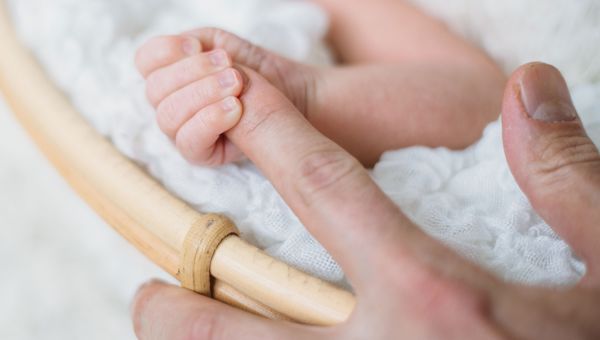6 types of depression you need to know about
Plus, ways to get mental health help.

Depression is an umbrella term for serious mood disorders that affect millions across the US. In fact, in 2015, about 16 million adults over 18 had at least one major depressive episode in the last year.
While some symptoms and treatment options can overlap, the types of symptoms and length of symptoms vary from person to person—and so do the actual diagnoses.
To better… Show More
Depression is an umbrella term for serious mood disorders that affect millions across the US. In fact, in 2015, about 16 million adults over 18 had at least one major depressive episode in the last year.
While some symptoms and treatment options can overlap, the types of symptoms and length of symptoms vary from person to person—and so do the actual diagnoses.
To better understand each type of depression, the symptoms, treatment options and ways to get help, psychiatrist Ernesto Figueroa, MD, of Saint Joseph Mercy Health System in Ann Arbor Michigan, defines them.
Medically reviewed in January 2020.
Show Less
Major depressive disorder
Major depressive order is the most common and general type of depression, and one that according to the American Psychiatric Association (APA), negatively affects how you feel and how you act.
“In the line of work that I do, this is by far the most common,” says Dr. Figueroa. Depression can make… Show More
Major depressive order is the most common and general type of depression, and one that according to the American Psychiatric Association (APA), negatively affects how you feel and how you act.
“In the line of work that I do, this is by far the most common,” says Dr. Figueroa. Depression can make you feel disinterested in things you used to enjoy—things like hobbies, activities with friends and work events may not be as fun as they used to be.
Other common symptoms of major depressive disorder include:
- Depressed mood
- Feelings of sadness
- Appetite changes, weight loss or weight gain
- Trouble sleeping or sleeping too much
- Fatigue
- Feelings of worthlessness or guilt
- Trouble thinking, concentrating or making decisions
- Having suicidal thoughts
In order to be diagnosed with major depressive order, you have to have five or more symptoms for a majority of the day, for two or more weeks. Most of the time, one of the symptoms is depressed mood or loss of interest in things you used to enjoy.
Common treatment options include antidepressants, psychotherapy or “talk therapy,” electroconvulsive therapy (ECT), a treatment procedure in which an electrical current is briefly applied to the scalp, and lifestyle changes like exercise, a healthy diet and steering clear of alcohol.
Show Less
Persistent depressive disorder or dysthymia
Persistent depressive disorder (PDD), or dysthymia, is a type of depression that is chronic or ongoing—meaning symptoms are almost always present. The symptoms of PDD are similar to major depression, but a bit milder, overall. But people with PDD can have episodes of major depression as well.
Persistent depressive disorder (PDD), or dysthymia, is a type of depression that is chronic or ongoing—meaning symptoms are almost always present. The symptoms of PDD are similar to major depression, but a bit milder, overall. But people with PDD can have episodes of major depression as well.
Symptoms occur on most days for at least two years in those with PDD. Sometimes—especially with children and teens—irritability is one of the main symptoms. Because of their persistently low mood, people may perceive them to be negative, antisocial or dependent. And even during occasions or celebrations that are typically happy, those with PDD have trouble joining in on the excitement.
Treatment is very similar to major depression; antidepressants, talk therapy and healthy lifestyle habits like regular exercise and avoiding alcohol and drugs is usually recommended.
Show Less
Seasonal affective disorder (SAD)
Seasonal affective disorder is, essentially, what it sounds like—depression that occurs because of the change of seasons, most often in the colder, cloudier months during fall and winter. And it’s not just the “winter blues” we’re talking about. Shorter days with less sunshine are associated with a… Show More
Seasonal affective disorder is, essentially, what it sounds like—depression that occurs because of the change of seasons, most often in the colder, cloudier months during fall and winter. And it’s not just the “winter blues” we’re talking about. Shorter days with less sunshine are associated with a biochemical imbalance. Seasonal changes can cause your circadian rhythm to get off track, affecting your daily schedules and everyday life.
Most SAD symptoms are similar to major depression, but excessive weight gain due to overeating and carbohydrate cravings are two other symptoms that accompany this depressive disorder. Excessive sleeping is also very common. “With SAD, some people who would normally sleep 8 hours, sleep 10, 11 or even 12 hours at a time. Some people compare this to going into hibernation mode.”
Treatments normally include light therapy, or exposure to artificial light that is similar to outdoor lighting, antidepressants, talk therapy or a mixture of treatments. Symptoms may also improve if you get some sunshine. It could be as simple as taking a daily walk outside when it’s light out or making sure your workspace is near a window, so more light can come in.
Show Less
Peripartum or postpartum depression
While bringing a child into the world is an amazing thing, many women—an estimated one in seven—experience feelings of sadness and anxiety, otherwise known as peripartum or postpartum depression during pregnancy or following the birth of their baby, or both.
Women go through a lot of hormonal,… Show More
While bringing a child into the world is an amazing thing, many women—an estimated one in seven—experience feelings of sadness and anxiety, otherwise known as peripartum or postpartum depression during pregnancy or following the birth of their baby, or both.
Women go through a lot of hormonal, mental and physical changes when they’re pregnant, and some of these changes paired with a mother’s natural instinct may cause women to feel down or depressed.
And while 70 percent of all new mothers experience the “baby blues” after birth, these feelings tend to subside after a few weeks. Peripartum depression symptoms are much more severe and can last for months.
Symptoms are similar to major depression, but here are some of the ways they can manifest in a new mother:
- Exhaustion
- Feelings of sadness or hopelessness
- Crying for no apparent reason
- Changes in appetite
- Difficulty connecting and bonding with your newborn
- Feelings of failure as a mother
- A loss of pleasure in life
- Worrying that you may harm you or your baby
And new fathers can also experience a bit of depression after the birth of their child. It’s important that both women and men seek treatment if they’re experiencing these feelings.
Women who have mild depression and are pregnant or breastfeeding are typically encouraged to try psychotherapy or talk therapy as the first line of treatment for peripartum. Resources like MotherToBaby and Postpartum Support International can connect you to other women going through the same experiences and to experts that can answer all of your honest questions.
Show Less
Bipolar disorders
Bipolar disorders are brain disorders that also affect your attitude, energy levels and productivity. Those who have any type of bipolar disorder have severe mood swings or mood episodes that are generally labeled as:
- Manic, or extremely energized or irritable for at least a week at a time … Show More
Bipolar disorders are brain disorders that also affect your attitude, energy levels and productivity. Those who have any type of bipolar disorder have severe mood swings or mood episodes that are generally labeled as:
- Manic, or extremely energized or irritable for at least a week at a time
- Hypomanic, a less intense manic episode that lasts for a few days
- Depressive, at least a two-week period of intense sadness and loss of interest in things that were once enjoyed
There are three types of bipolar disorders, including bipolar I, bipolar II and cyclothymic disorder:
- Bipolar I disorder: manic episodes lasting for seven days or more, or severe manic symptoms that require hospitalization.
- Bipolar II disorder: a combination of depressive and hypomanic episodes, not as severe as bipolar I.
- Cyclothymic disorder: periods of hypomanic and depressive symptoms that go on for two years or more. However, the symptoms are not as severe and don’t meet the criteria for depressive or hypomanic episodes.
Those with bipolar disorder will also have periods where their moods are fairly normal, too; one month it feels like things are together. The next month, the person may feel down or depressed.
Treatments are similar for all types of bipolar disorders. Mood stabilizing and antidepressant medications coupled with talk therapy are usually recommended. It’s most effective if the treatment is continuous (especially for those with bipolar I). If medication and talk therapy are not successful, electroconvulsive therapy (ECT) may be tried.
Bipolar symptoms can affect family and friends, too. Many times, it’s beneficial for loved ones to reach out to support groups or counselors to help them better understand the condition and how to interact.
Show Less
Premenstrual dysphoric disorder
Another form of depression Figueroa thinks is important to discuss is premenstrual dysphoric disorder (PMDD), a condition that has now officially been recognized in psychiatric manuals.
As if bloating, cramping and tampons aren’t enough, some women have severe mood swings, feelings of depression… Show More
Another form of depression Figueroa thinks is important to discuss is premenstrual dysphoric disorder (PMDD), a condition that has now officially been recognized in psychiatric manuals.
As if bloating, cramping and tampons aren’t enough, some women have severe mood swings, feelings of depression and irritability so intense that it interferes with daily life and relationships during the weeks leading up to their menstrual cycles. And women who already have other physical and mental conditions, like depression, bipolar disorder, anxiety disorders and eating disorders, may find that these issues worsen around the time of menstruation; this is called premenstrual exacerbation.
To be diagnosed with PMDD, a woman must experience symptoms for most all menstrual cycles over the course of a year, and the symptoms must interfere with regular daily activities like work or school.
Symptoms usually improve when a woman’s period begins, but there are treatment options for women who have PMDD, too. Getting regular exercise and practicing stress reduction techniques usually help.
And in addition to the typical depression treatments like antidepressants, experts may recommend oral contraceptives.
Show Less
Why it’s important to get help and seek treatment
Depression is a serious health condition. No matter what type of depression you or a loved one has, if left untreated, it can lead to thoughts of self-harm and problems with work, relationships and everyday life. “It’s an episodic condition. If you don’t seek treatment, you’re most likely going to… Show More
Depression is a serious health condition. No matter what type of depression you or a loved one has, if left untreated, it can lead to thoughts of self-harm and problems with work, relationships and everyday life. “It’s an episodic condition. If you don’t seek treatment, you’re most likely going to have another episode, and over time, those episodes will become more frequent, more serious and harder to treat,” says Figueroa. But on the other hand, there are very successful treatment options for depression. “Psychiatry is privileged to have a really good variety of successful treatments to offer for this condition.”
The first step is reaching out. “One of the most difficult aspects to deal with is the fact that people still don’t reach out for help when they struggle with depression.” It’s so important to recognize the symptoms and how long they last. Reach out to your primary care physician if symptoms of depression reoccur over the course of a few weeks. And always remember there are so many ways to get the help you need.
Here are some of the resources available to you:
- Look for support groups in your area through the Depression and Bipolar Support Alliance.
- Find courses and support if you’re a caregiver to a person with depression through the NAMI Family-to-Family program.
- Learn more about mental health and get involved on your college campus with Active Minds.
More On


video


video


video


video
